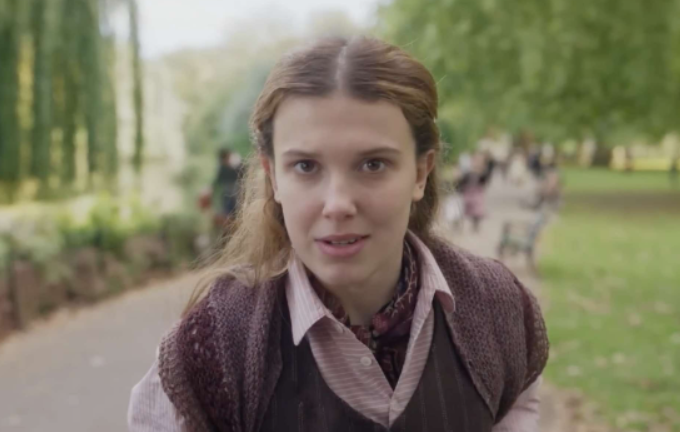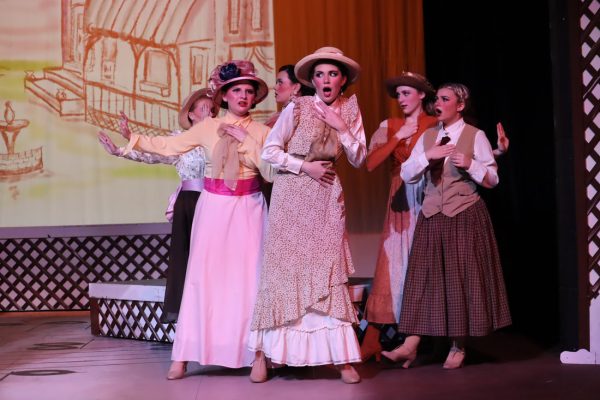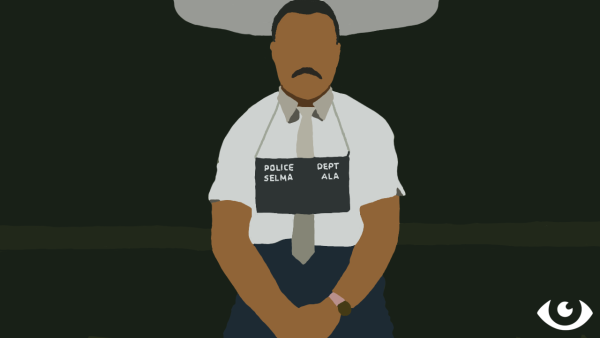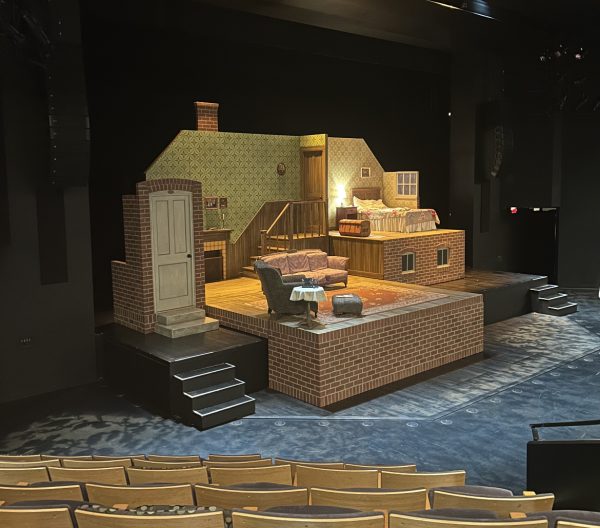REVIEW: Enola Holmes is back on the case
Enola looks at the camera, something she does several times throughout both movies. Photo courtesy of Netflix
November 22, 2022
“The game has found its feet again.”
Indeed it has because the world recently welcomed back one of their smartest, wittiest, bright-eyed and most masterful detectives, Enola Holmes. Starring Millie Bobby Brown, Henry Cavill, and Helena Bonham Carter, Enola Holmes returns in this cheesy, action-packed, riveting sequel that may even be better than the original. Inspired by a true event, the Match Girls Strike (which was the first ever industrial action taken by women for women), “Enola Holmes 2” has the capability to enthrall audiences all over.
Though in the shadows of her older brother, famous detective Sherlock Holmes, Enola is determined to set off along her own path, beginning in London, where she starts her own detective agency. However, without any clients, that plan backfires and Enola is forced to close shop. Shortly after, she gets her very first client; a young girl by the name of Bessie hires Enola to track down her missing sister, Sarah Chapman. What starts out as a missing persons case quickly entangles Enola in a blackmail scandal, the mysterious circumstances surrounding a match factory and trouble with the local police.
Enola soon realizes she’ll need some help from her friends, including close friend/love interest Viscount Tewkesbury, radical suffragette Edith and other girls who are employed at the match factory. Sherlock, although somewhat reluctantly, eventually decided to help Enola, as well as Enola’s mother, Eudoria. Throughout it all, Enola stands up to the powerful political figureheads that dominate London. With her great command of mechanical physics, strong fighting skills, courage, determination and her ability to observe, Enola uncovers several secrets and scandals in a clever, game-like way that puts an end to her first ever case and exposes the villains.
One person who helps save Enola’s life along the way is her mother. Though Eudoria Holmes plays a somewhat minor role in the films, she plays a big role in Enola’s upbringing. After Enola’s father died and her two older brothers left home, Eudoria decided to raise her daughter her own way. Unlike other mothers, who hired a governess, made their daughters practice etiquette, embroidery, fashion and the benefits of finding a husband, Eudoria taught Enola to read, to fight, to play sports, to think for herself, to be independent and to set her own path.
Eudoria is also a very distinguishable and unique woman herself; she is a suffragist and is always one step ahead of the local police. Eudoria is what makes Enola distinguishable from all the other ladies of society. Although Enola’s capabilities and upbringing are astonishing to society, it makes Enola unique, which catches the attention and curiosity from Viscount Tewkesbury.
And speaking of Viscount Teweksbury, many fans at the end of the first film quickly jumped at the opportunity to exclaim their feelings towards a possible future relationship between Tewkesbury and Enola. Though Enola is immune to his good looks and charm at first (and is really more annoyed by his presence than anything), she begins to develop feelings and have a growing interest at the end of the first film; howver it starts to become more serious for Enola in the sequel. Enola, being the fiercely independent woman she is, initially denies her feelings for Teweksbury, but later realizes what she is feeling is worthwhile. Though her feelings and later on her declaration of love may appear as breaking off from her independent character, that won’t stop Enola from being who she is.
Released on Friday, November 4, Enola Holmes 2 quickly jumped up to Netflixs’ ‘Top 10 in Movies’ and for good reason.
One unique feature that is apparent throughout both movies, but especially in the sequel, is that Enola frequently looks directly at the camera, intentionally talking to the audience, inviting the audience to be a part of the case, asking them questions, making gestures, etc. Enola’s facial expressions towards the camera are quite humorous most of the time and are so expressive that one doesn’t even need to guess how she is feeling or what she thinks.
One of the other things that is very enjoyable in the film is the use of playful graphics, illustrations, notes, picture art, newspaper clippings, diagrams, etc that were displayed multiple times throughout. The visual components add a more dramatic effect; without them the audience would just have to follow along to the best of their ability and it can be difficult to keep up with the intense mystery sometimes. Instead of the film just being shots and dialogues, the visuality makes it more unique and adds a sense of solving-a-case-and-collecting-clues-and-tying-those-clues-together scenario.
Another thing that the filmmakers did well was its use of replicating eighteenth century clothing and the backgrounds/settings of places throughout the movie. The costumes of each character are so detailed and not only are they very simple but also elaborate, they represent each characters’ attitude and personality. For example, Sherlock is a bachelor and usually spends his time alone working on cases; he is very formal and is sometimes broody. This is then represented in his clothing, as Sherlock generally wears dark colors to represent his individualism and lifestyle as a bachelor. He is also very well dressed, which represents his politeness and formalness towards his associates.
Also, in almost every scene, there is constant background movement and detail, whether it be through the use of extras and/or the use of detail and props in certain settings. For example, in Tewkesbury’s apartment, the addition of a lot of plants, the bright and warm colors of the furniture, the burning of the fireplace and the props on the wall make the background of the scene more complex and add to the Viscount’s personality. In this case, Tewkesbury is an expert on plants, so it would only make sense that he would have lots of plants in his apartment.
One thing I did find at fault in the film was its apparent but unaddressed issue of race. The movie’s main focus is on women’s rights and class inequality, and while the cast ensemble features a diverse group of actors and actresses, there was a gap in talk and issue about race. The fact that the filmmakers focus so much on the other issues addressed in the film and basically ignore this one is a bit appalling, especially for its time.
However, the good outshines the bad, and this film is no exception.


















